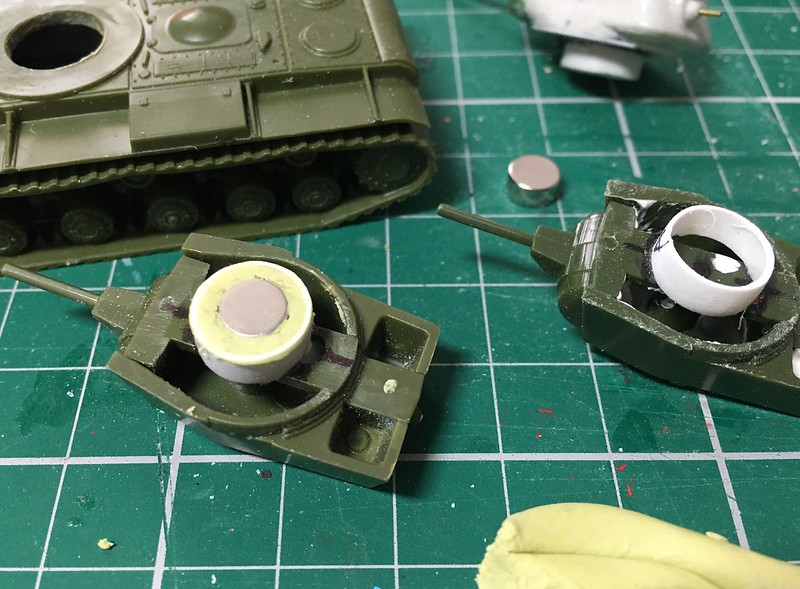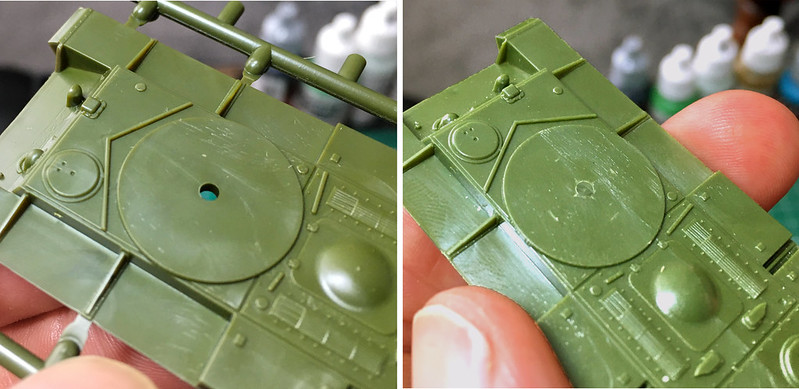Blimey - I completed something! Par-tae! 😂
OK, it's just a little test tile for a modular road set I'm thinking of making, but it's something. But before I get ahead of myself - here's how I completed the tile...
6... (See
previous post for the first 5 steps)... I painted the black primed base with some muddy acrylics colours. I tried to make it quite thin in places so you can see faint patches of the black primer showing through...
I varied the mix of brown as I went along - a dark mahogany with a mid-chestnut - so that it also helped produce
a patchy multi-tonal effect.
7... Next, I did some dry-brushing to pick out the raised textures to give the road some highlights. I went quite light to create some high-contrast so that - in theory - it would show through the flocking easier. It does look a little messy at this point...
Additionally, I drizzled in some dark wash into the deeper crevasses and around some of the 'rocks and stone', just so they 'popped' out a little more.
8... Onto the flocking. I haven't done a lot of this - just some vehicle bases - and so I was a little nervous about this stage as flocking is seen among modellers as being a bit of an art form! Also, I only have a very limited supply of mainly 'medium' summer green - The Terrain Tutor used a mix of three tones to create shade and highlights to his imitation grass...
After application (above photo) I tapped off the excess then waited for the PVA glue I used to stick the flock to the tile dry. Then I went over the grass with a dry paint brush and carefully brushed off any remaining flock AND to uncover any of the road detail that I wanted to show through - like the track texture pattern and clumps of 'rocks' and 'stones'.
9... Now, just to finish off my road I added some extra highlights (as the PVA I sprayed on the road to 'fix' the flocking in place has dulled down my previous highlighting). Also, because I only had one shade of grass flocking - medium summer green - I added some dry-brushed highlights to this as well using a ochre-beige (a light mustard shade) just to give the grass some tonal variation.
And bob's your aunty...
Conclusion...
Well, technically the test tile turned out 'OK'-ish. I'm both pleased that I have actually completed a bit of modelling AND that I think I did a decent job...BUT (there had to be one)...
As to it being the answer to my need for a modular road system for my 1/100 GF9T games, I am less happy. The main fly in the ointment is that the tile is warping - I managed to hide this fact in the photos I took BUT there is a noticeable bow in the middle... This annoys me as I notice it
(it's an OCD thing)!
The whole point of reinforcing the foam board base of this tile with wooden lolly-sticks was to prevent warping...And this clearly hasn't worked. Also, this is project has been quite a lot of work so if I'm going to do it I want it to be damn near perfect with NO niggles.
So, what to do...?
Well, I think I have two options:
Option 1: Find a sturdier board on which to base my road WITHOUT it being too thick, heavy or expensive...
Option 2: Do some mental calculations about just how long a complete roadway set is going to take me to make and decide whether it would be more cost-effective just to buy a pre-made set from
Fat Franks...
 |
'Fat Frank's' 15mm Wargame Dirt Roads Set is £7.50 - taking into consideration
how much work it was to create my test tile, is paying £7.50 a better deal? |
...To be Continued!




















































